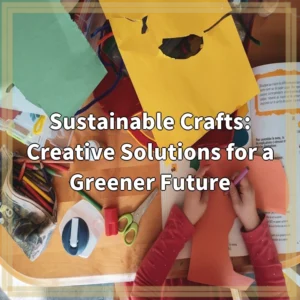What is Green Practices in Archaeology?
Green Practices in Archaeology involves adopting sustainable and conservation-oriented approaches in archaeological fieldwork, research, and interpretation. It is a growing movement within the field that aims to minimize negative environmental impacts and maximize the potential for positive contributions to the environment.
Real-World Problems Associated with Green Practices in Archaeology
Despite the increasing awareness and efforts towards green practices in archaeology, several challenges and issues persist.
1. Limited Funding and Resources
One of the primary hurdles faced by archaeologists when implementing green practices is the lack of adequate funding and resources. Adopting environmentally-friendly methods often requires additional investments, such as using sustainable materials or utilizing renewable energy sources. However, without sufficient financial support, archaeologists may find it difficult to carry out these practices.
2. Balancing Preservation and Exploration
Archaeologists face the challenge of striking a balance between preserving archaeological sites and conducting research and exploration. Sustainable practices require minimizing disturbance to the environment, but at the same time, archaeologists need to excavate and analyze artifacts and structures to gain valuable insights. Finding ways to achieve both objectives without compromising the integrity of the site is an ongoing challenge.
3. Waste Management
Archaeological excavations can generate a significant amount of waste, including soil, sediment, and debris. Proper waste management practices, such as recycling, reusing materials, and disposing of hazardous waste appropriately, are essential for minimizing the environmental impact. However, waste management infrastructure and regulations may vary, posing challenges for archaeologists working in different regions.
4. Collaboration and Education
Green practices in archaeology require collaboration and education among archaeologists, heritage managers, local communities, and policymakers. Building partnerships and promoting knowledge-sharing can foster a better understanding of the importance of sustainable approaches and encourage the adoption of green practices. However, creating effective networks and platforms for collaboration can be challenging, especially in areas where there are limited resources or conflicting priorities.
5. Climate Change and Environmental Hazards
Climate change and environmental hazards like erosion, flooding, and wildfires pose a significant threat to archaeological sites worldwide. These challenges add to the urgency of implementing green practices in archaeology to mitigate further damage and ensure the long-term preservation of cultural heritage. Addressing these issues requires increased awareness, research, and adaptation strategies.
Conclusion
Despite the challenges, the adoption of green practices in archaeology is vital for the sustainable preservation and interpretation of our shared cultural heritage. Finding innovative solutions, securing funding, increasing collaboration, and raising awareness are key steps in overcoming the real-world problems associated with going green in archaeology.

Solutions for Green Practices in Archaeology
Despite the challenges, there are potential solutions to address the real-world problems associated with green practices in archaeology.
1. Securing Funding and Resources
To overcome limited funding and resources, archaeologists can actively seek grants and partnerships with organizations that support sustainable practices. Building alliances with environmental agencies and leveraging crowdfunding platforms can also help secure the necessary financial resources.
2. Integrating Preservation and Exploration
Archaeologists should prioritize the use of non-intrusive and non-destructive techniques whenever possible to balance preservation and exploration. This could include employing remote sensing technologies, such as LiDAR and ground-penetrating radar, to gather information without physically disturbing the site.
3. Implementing Effective Waste Management
Establishing waste management protocols at excavation sites and utilizing recycling and waste reduction strategies can mitigate the environmental impact of archaeological projects. Collaboration with local waste management facilities and adherence to regional regulations are crucial.
4. Promoting Collaboration and Education
Creating networks and platforms for archaeologists, heritage managers, communities, and policymakers to share knowledge and expertise is vital. Collaborative projects, workshops, and educational programs can foster a deeper understanding of sustainable practices and encourage their adoption across the field.
5. Addressing Climate Change and Environmental Hazards
Archaeologists can work closely with climate scientists and environmental experts to develop adaptation strategies for archaeological sites vulnerable to climate change and environmental hazards. This may involve implementing protective measures, such as coastal erosion management and fire prevention plans.
Conclusion
By implementing these solutions, the archaeological community can overcome the challenges and make significant progress in striving for sustainability and conservation through green practices. It is through collective efforts and a commitment to environmentally friendly approaches that we can ensure the long-term preservation of our cultural heritage for future generations.













